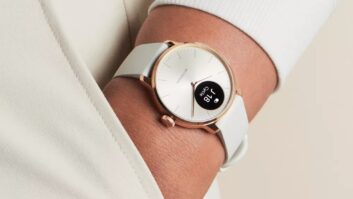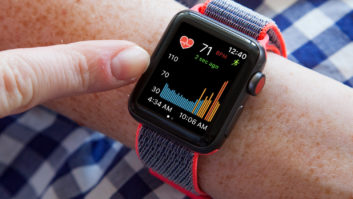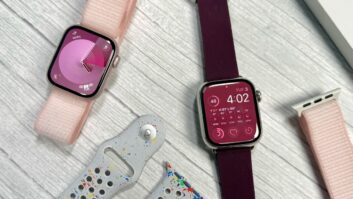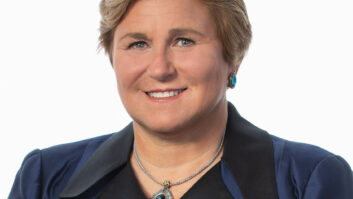The wearables market represents a significant new market opportunity for device OEMs. Fitness and health trackers currently represent the most popular category within the wearables market, and product models can range from low-end, simple pedometers to high-end, multifunctional trackers with integrated heart rate monitoring and GPS functions.
Consumer Interest in Personal Health and Wellness
Health and fitness are application areas with significant potential for long-term consumer engagement and ongoing streams of data and revenues. About 45 percent of consumers in U.S. broadband households are very concerned about their health. The breakdown of this figure shows that one in three is concerned about diet habits, whereas about 40 percent are worried about their lack of exercise.
It is a cliché, but unfortunately a true one, that a wide chasm sits between healthcare intentions and actions. As of now, consumer uptake of digital health activities is still low relative to the prevalence of obesity and other weight and diet-related health problems. However, consumer awareness and adoption of these devices have increased recently, riding the wave of apps and mobile computing devices, including smartphones and tablets. As of early 2014, about one in five U.S. consumers has started to use devices that track their health status, and one in four has used health apps in the past 12 months. In the next 12 months, 13 percent of U.S. broadband households are “very likely” to purchase a connected health device.
Market Barriers to Consumer Adoption and Usage
In response to this rising consumer interest, the wearables space is growing more competitive, with big names like Google and Nike offering their own solutions, but OEMs, developers and device manufacturers will have to overcome several market barriers to realize the full potential of this market.
First and foremost, fitness and health wearables face an obstacle common to all fitness devices — they are at the mercy of users’ motivations. The device will be used only for as long as users stay dedicated to their fitness or health regimen. As a result, these devices must offer the right balance of value and ease-of-use to keep the wearer engaged and interested.
The wearable market’s success is also highly dependent on positive user experiences that keep the wearer motivated for the long-term use. For those devices that offer health and fitness benefits, a good user experience is defined by both hardware/software features and the level of health benefits accrued through repeated usage. Health consumers want to see results, they need immediate and consistent feedback, and they believe they deserve encouragement and rewards for their efforts. A lack of progress leads to disappointment, alienation, or even resentment — human emotions that can cost device manufacturers customer loyalty and future revenue opportunities.
The Growth of Digital Health and Fitness Trackers
The digital activity tracker market has been growing rapidly — from 2010 to 2013, connected digital activity trackers experienced triple-digit unit growth from under 500,000 to almost 5 million units. Consequently, connected digital activity trackers as a percentage of the entire digital activity tracker category has increased from 6.5 percent in 2010 to more than 55 percent in 2013.
Competition has been accelerating since 2011 as the digital fitness market has expanded. Apple’s entry into the health and fitness market is a particularly significant event — the brand has a disproportionate influence on consumers’ awareness and behaviors, and its massive resources and support from the developer community could lift the wearable industry substantially. At the same time, Google’s and Samsung’s health and fitness platforms will add a healthy dose of competition.
At this stage, manufacturers are focused on design, price, and marketing and distribution to gain advantages. Large CE manufacturers are trying to leverage their scale and cost advantages to crush smaller competitors, especially fitness technology start-ups. Start-ups counter this competition by becoming more focused on unique features and designs and integration with popular fitness apps.
Long-term market success for any company hinges on their device’s ability to offer concrete benefits to customers paying for these devices or organizations financing the purchases. Companies will find it easiest to sell digital health and fitness devices and services to consumers who are highly conscious about their health conditions than to those who ignore their health conditions or are unaware that their health condition warrants attention and action. These health-conscious consumers will be the early adopters for health and fitness wearables.
Looking to the Future
The consumer role in healthcare is changing from passive to active. Changes in the healthcare industry are arming consumers with more knowledge and better tools to be more engaged than ever in their health. These changes are reshaping consumer expectations for healthcare products and services and empower consumers to seek a more active role in their care regimen.
In the consumer wellness market, one of the biggest changes will be the strong demand for wearables, according to Parks Associates’ research and analysis. Sales of connected digital fitness trackers as a percentage of total digital fitness tracker sales have been steadily increasing, and Parks Associates expects this trend to continue.
Worldwide sales of connected digital fitness trackers will top 22 million units in 2014, or 52 percent of all digital fitness tracker unit sales. The proportion of connected fitness tracker sales will also keep climbing, reaching 81 percent by 2018 (66 million), and account for an overwhelming majority of the entire category’s revenues.
Parks Associates believes that long-term market success hinges on a fitness tracking device’s ability to offer concrete benefits to customers paying for these devices or organizations financing the purchases. Specific strategies may include the following:
* standardize measurements of consumers’ fitness progress and simplify the fitness management process;
* enrich user experience by tracking other elements of healthy living; and
* introduce fitness management and coaching services to deepen user engagement and demonstrate value.
Harry Wang is health and mobile product research director at Parks Associates.













